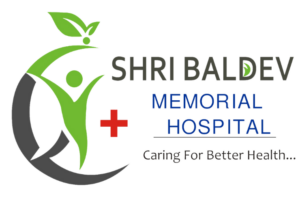Introduction to Tennis Elbow
Tennis elbow, medically known as lateral epicondylitis, affects many people, not just tennis players. This condition involves pain around the elbow, often due to repetitive use of the arm. It can make day-to-day tasks difficult and uncomfortable. Whether you’re lifting a bag of groceries or typing on a keyboard, the discomfort can hinder movement and flexibility. Surprisingly, it is not exclusive to athletes. Many non-athletic professions, where repetitive arm movements are common, often see cases like this, proving that anyone can be affected by tennis elbow.
Defining Tennis Elbow
The term tennis elbow might sound like it’s just for sports enthusiasts, but that’s a myth. It refers to a condition where the outer part of the elbow becomes painful and tender. This experience is due to tiny tears in the muscles and tendons around the elbow. People engaged in repetitive arm activities, such as typing or painting, can also encounter these issues. So, it’s important to know that tennis elbow isn’t just an athlete’s curse. If you’re constantly repeating arm motions, this could happen to you too.
Causes and Risk Factors
Tennis elbow is primarily caused by overusing the forearm muscles. These muscles are responsible for straightening and lifting your wrist, especially during repetitive movements. Common activities leading to tennis elbow include:
- Repeated use of a computer mouse or keyboard
- Yard work like gardening or trimming hedges
- Painting or hammering for long stretches
Certain risk factors increase the likelihood of developing tennis elbow:
- Age: Most commonly found in people aged 30 to 50.
- Poor Techniques or Equipment: In sports or work, using old gear or incorrect techniques strains the elbow.
- Weak Forearm Muscles: This leads to less support during activities that require wrist movements.
Knowing these factors helps understand who might be more susceptible to developing tennis elbow, and leads to adopting lifestyle changes.
Recognizing the Symptoms
Do you feel pain outside your elbow or notice it getting worse with wrist movements? Tennis elbow often starts with minor discomfort but can advance to serious pain. Here are key symptoms to look out for:
- Elbow pain and tenderness
- Pain that worsens during arm activities
- Weak grip strength
If these symptoms persist, it’s likely progressing from mild discomfort to chronic pain, requiring more attention.
Diagnosis Methods
Doctors often start by asking about your daily activities and symptoms to understand the tennis elbow issue. They’ll test the elbow’s range of motion to pinpoint pain points. If necessary, imaging tests like MRIs help exclude other conditions, ensuring the right diagnosis.
Treatment Options for Tennis Elbow
Conservative Treatments
- Resting: It’s crucial to avoid activities that worsen the pain. Giving the arm a break can reduce symptoms.
- Bracing: Wrist braces or forearm straps help limit motion, sparing further strain.
- Icing and Heating: Alternating between ice and heat soothes inflammation and aids recovery.
- Painkillers: Over-the-counter anti-inflammatory drugs like ibuprofen ease swelling.
- Physiotherapy: Involves specific exercises to stretch and strengthen the forearm.
- Corticosteroid Injections: These can offer relief if other methods don’t alleviate the pain.
Advanced and Surgical Treatments
When conservative methods don’t help, advanced treatments may be needed:
- Platelet-rich Plasma Injections: These use your own blood to encourage healing.
- Shockwave Therapy: Applies sound waves to the affected area, stimulating blood flow.
- Surgery: Considered for persistent cases, minimally invasive surgery can clean up the damaged tissues.
- Recovery: Post-surgery, physical therapy is vital to regain strength and motion.
The success rate of surgery is high when combined with a thorough rehabilitation plan.
Preventative Measures
Avoiding tennis elbow is possible with a few mindful habits:
- Sports Technique: Ensure you use proper form to reduce stress on the elbow.
- Strengthening: Incorporate exercises to strengthen arm muscles, providing support for repetitive tasks.
- Workplace Ergonomics: Adjust workstations to reduce strain.
- Regular Breaks: Avoid repetitive motions without resting.
These simple steps can go a long way in keeping tennis elbow at bay.
When to Seek Medical Assistance
If tennis elbow symptoms don’t improve after weeks of self-care, it’s time to see a doctor. Look out for:
- Persistent elbow pain
- Swelling or redness
- Inability to perform daily tasks
These signs suggest professional evaluation is necessary to prevent further harm and regain normal function.
Conclusion and Encouragement
Managing tennis elbow is doable with timely intervention and the right strategies. Early treatment can significantly improve outcomes, while preventive steps help maintain elbow health. If symptoms persist, consult a healthcare provider to explore the best solutions for you. Staying proactive about your health ensures long-term relief and prevents future discomfort.
Consult us today at Shri Baldev Memorial hospital for expert guidance!



